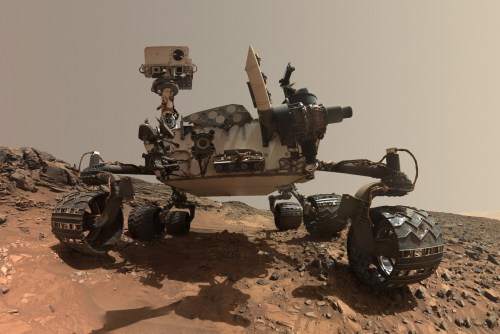It might be a long weekend in the U.S., but on Mars, the Curiosity rover doesn’t get holidays off.
Typically, the Curiosity team will plan out all the rover’s activities over the weekend, then leave the rover to execute those plans while they take a well-deserved weekend break. The time for the rover is planned out in “sols,” or Martian solar days, which are just a touch longer than an Earth day, at 24 hours, 39 minutes, 35 seconds long.
The team will typically plan out 3-sol weekends for Curiosity, but as this weekend is a holiday they needed to plan out 5 sols of activity for the rover. “To give the (American) Earthlings a holiday on Friday, we planned 5 sols of activities for Curiosity today,” NASA scientists wrote in a blog post. “But our rover will certainly not be taking any days off, with a mix of science and engineering activities over the long weekend.”
One important task for Curiosity this weekend is the updating of the rover computer’s flight software as part of routine software updates. Even on Mars, software needs to be regularly updated. During these updates, the rover cannot perform science operations. So these tasks will take up the first and last sol of the 5-sol period. Software updates can be used to add new functionalities to the rover and make improvements in its systems such as by tweaking its autonomous driving capabilities.
Without direct physical access to the rover for years and even decades, the scientists have to make the best use of these software updates to keep the mission going for as long as possible. In 2013, a software update was even able to save Curiosity’s worn-down wheels by using a traction control algorithm to adjust the wheels’ speed and orientation to reduce wear and improve traction.
In the time not spent performing software updates, Curiosity will be performing a schedule of remote sensing science, including using its ChemCam and Mastcam instruments to investigate the nearby rock environment for the geology theme group, known as GEO.
It is also currently the dusty season on Mars, where the wind picks up tiny particles which cover most surfaces. “The amount of dust in the atmosphere has been increasing over the last 2 weeks, although it is still within typical values for the season above Gale Crater,” the NASA scientists wrote. But they will be keeping an eye on the weather and looking out for dust devils so they’ll have advance warning for any storms developing.
Editors' Recommendations
- NASA selects 9 companies to work on low-cost Mars projects
- NASA is looking for volunteers for yearlong simulated Mars mission
- NASA’s Mars copter flew high, fast, far, and long. Here are the key stats
- NASA’s Mars helicopter still working fine after month-long break
- NASA stops speaking to its Mars robots, but they haven’t fallen out
